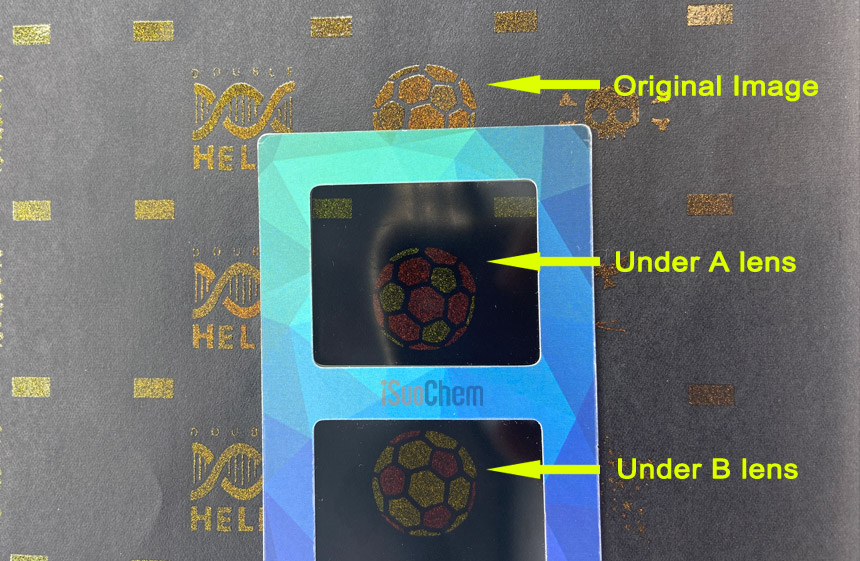 [email protected]
[email protected]
 +86 13965049124
+86 13965049124
 [email protected]
[email protected]
 +86 13965049124
+86 13965049124
categories
recent posts
Scientists have recently unveiled a groundbreaking liquid crystal-based material that shows tremendous potential as a replacement for color-shifting ink in various security applications. From banknotes to ID cards and security labels, this innovative material offers a promising solution.
Unlocking the Power of Circular Polarization:
One of the key advantages of this liquid crystal material is its ability to exhibit circular polarization properties. By harnessing the unique rotational nature of light within these crystals, colors can be manipulated to appear or disappear simply by altering specific polarization conditions. This remarkable feature allows for easy detection of discoloration using a range of devices, including mobile phones, polarized eyes, and even the naked eye.
The liquid crystal anti-counterfeiting material mainly includes Color-changing formula liquid, liquid crystal security pigment, and liquid crystal anti-counterfeiting film.

Image 1: liquid crystal security pigment
As a pioneer in the anti-counterfeiting pigment industry, iSuoChem currently focuses on pigments and anti-counterfeiting films.

Image 2: liquid crystal security effect
Additionally, the study suggests that by utilizing the new technique outlined in their research, the production of multilayer liquid crystals could yield a multitude of optical effects, making them ideal for anti-counterfeiting measures. These advanced optical effects provide an added layer of complexity, rendering the liquid crystal materials exceptionally difficult to imitate or forge.
Technical level:
At a technical level, the liquid crystal is expertly engineered into multiple layers capable of reflecting light in different colors, all without the use of pigments. The total thickness of the resulting multilayer liquid crystal polymer structure measures a mere 3-5um. Combining this thin, low-light optical design with precise molecular manipulation through light-controlled molecular orientation has paved the way for this remarkable breakthrough.
Material level:
To achieve this feat, a specific additive known as a chiral dopant is employed, inducing spontaneous rotation within the liquid crystal and forming a helical structure called a "cholesteric" liquid crystal. Accompanied by an elaborate production system involving 17 reactors, 11 types of stirring paddles, and 7 filters, a series of specialized material formulations assists in the creation of this unique material.
Process:
Protected by stringent confidentiality measures, the development team has perfected a core process, utilizing their extensive technical expertise. Moreover, the production equipment is meticulously customized to meet the precise requirements of the manufacturing process.
Equipment:
The creation of multilayer liquid crystals through this simple yet ingenious method sets the foundation for incorporating exceptional optical properties into the material. Building upon this new technology, the team aims to further expand their research by developing diverse functional particles and composite materials.
Emulsion-Based Manufacturing Process:
As part of our research project, the scientific team employed a co-solvent capable of dissolving in both oil and water. By skillfully combining organic alcohol, hydrophilic humectant, and hydrophobic liquid crystal material, the substances were evenly mixed together. Subsequently, the mixture underwent emulsification in water, resulting in the formation of microemulsion droplets. As these droplets underwent phase separation, the exchange of co-solvents, humectants, and water molecules occurred across the emulsion droplet surface.
Based on the initial mixing ratios, the substances naturally divided into one to five layers of multilayers, offering the flexibility to control the number of layers. Further phase separation within each emulsion droplet led to varying concentrations of chiral dopants within the liquid crystal, thereby producing a captivating array of structural colors. This simplified emulsification process represents a groundbreaking new technique for creating multilayer liquid crystals.
The development of this liquid crystal-based material represents a significant leap forward in the realm of security features. With its remarkable circular polarization properties, enhanced multilayer structures, and simplified manufacturing process, this material holds immense potential for combating counterfeiting. As research continues, we eagerly anticipate the creation of new functional particles and composite materials, further pushing the boundaries of what this technology can achieve.
the professional team to service !